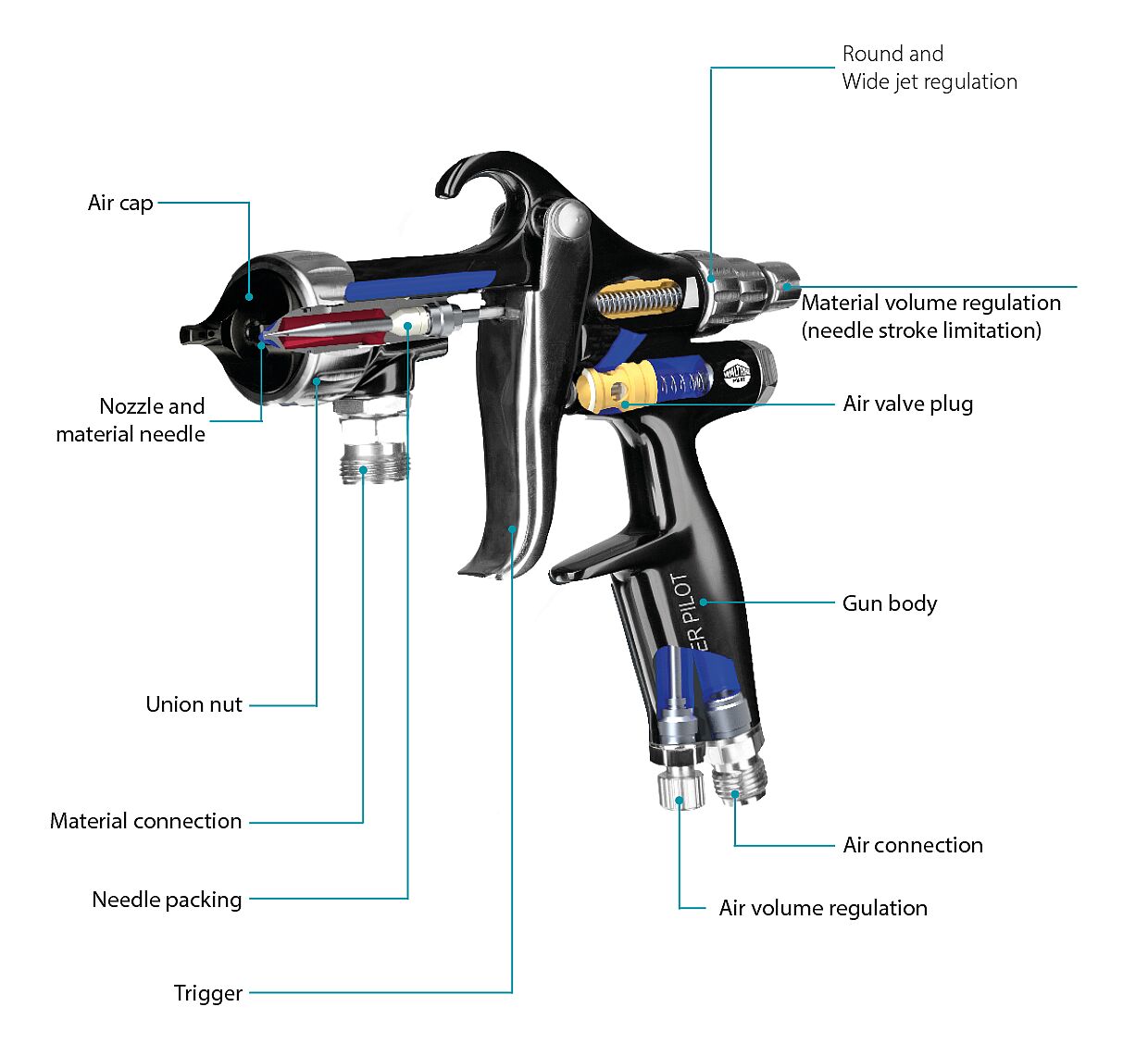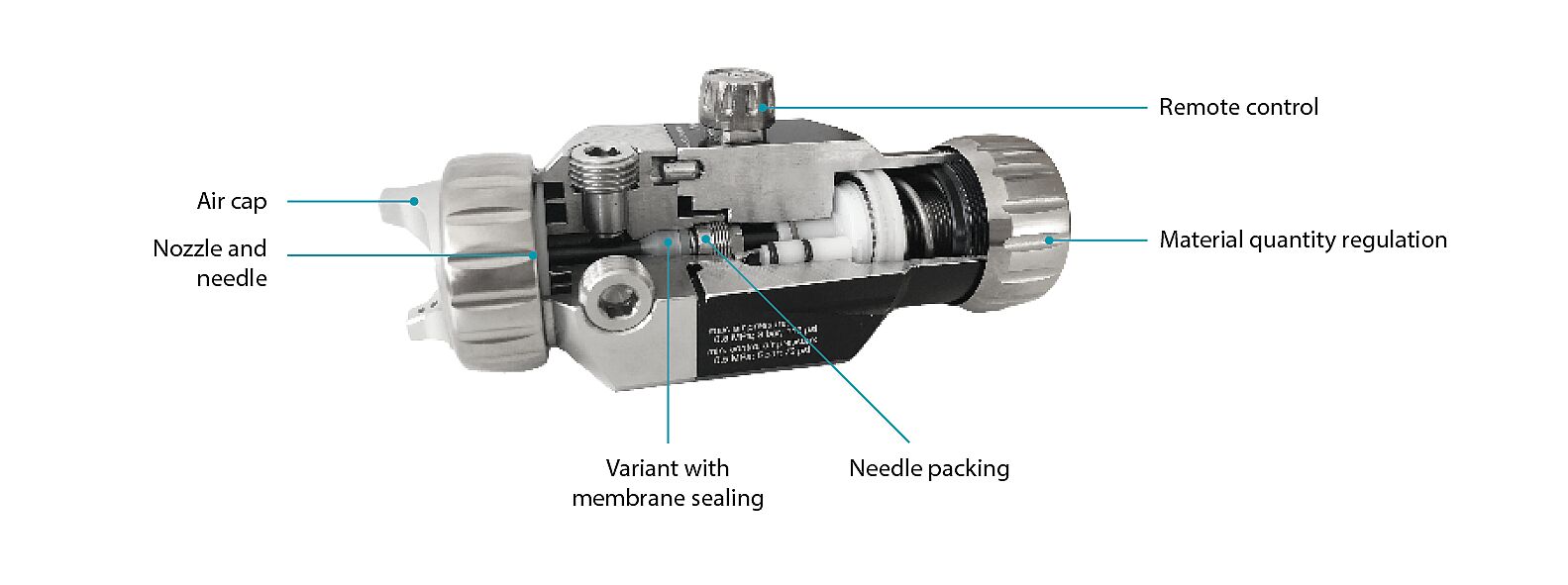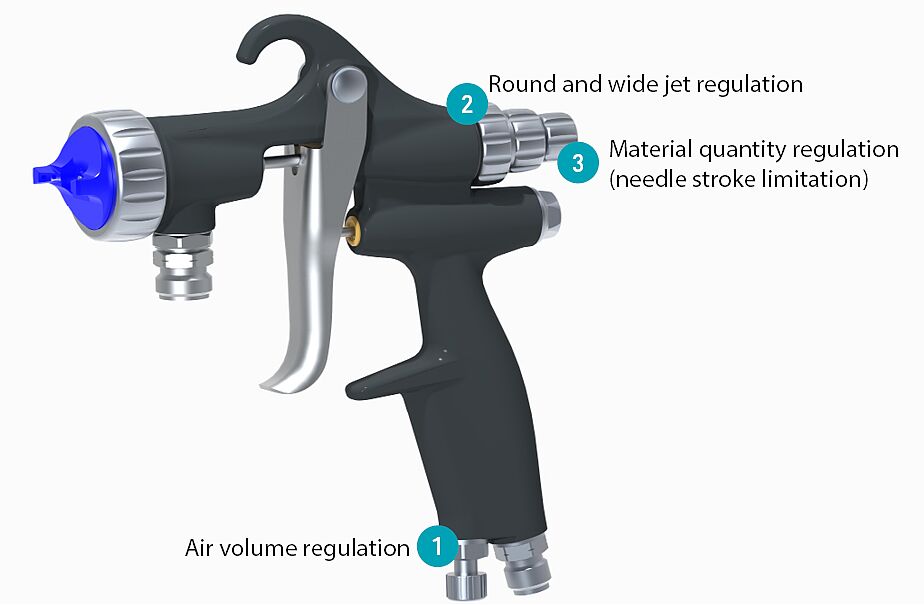Spray guns - everything you need to know
Basically, you choose a spray gun based on your material used or even the cost. But there are many other factors that influence your decision. For example, handling, wear, functionality and even design all play a role. Get an overview of the spray guns and their features here: from the types to the spraying process. Which is best suited for your work process?
Manual spray gun and automatic spray gun
Depending on your application, you can choose a manual or automatic spray gun.
Manual spray guns are well suited for one-off jobs in the broadest sense. Examples of work you can do with a manual spray gun are touch-up jobs, spraying smaller- to medium-sized areas, or decorative work. Of course, you can also work large areas, or within a batch or variety production, with a manual spray gun, but this can be very tiring. In addition, your results with a hand spray gun are often not accurately repeatable. Hand spray guns are available with a flow cup or in a material connection version.
For product your mass, batch, or variety production, an automatic spray gun is suitable. You can choose from a wide range of modular guns. The spray guns can be perfectly integrated into your or a plant. Above all, automatic spray guns are your guarantee for a reproducible and accurate result. Examples of work you can do with an automatic spray gun are marking and signing work or precision spraying.




